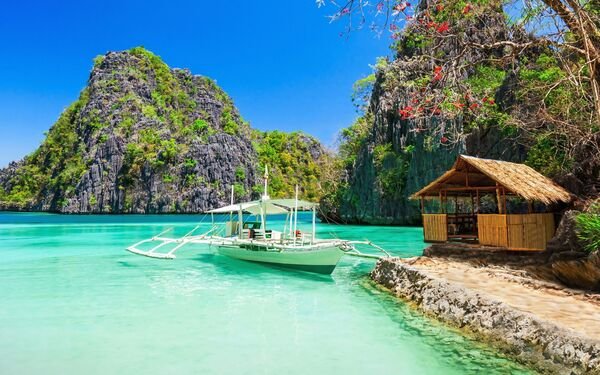PHILIPPINE
About Philippines
Welcome to the Philippines, a tropical paradise with pristine beaches, crystal-clear waters, and vibrant culture. Explore the idyllic islands of Palawan, Boracay, and Cebu, snorkel or dive in the Tubbataha Reefs Natural Park, and hike to the stunning Banaue Rice Terraces. Experience Filipino hospitality, savor delicious dishes like adobo and lechon, and take part in colorful festivals like the Ati-Atihan and Sinulog. Must-visit places include Manila, Bohol, and the Chocolate Hills.
Philippines Packages
THINGS TO KNOW BEFORE YOU GO:
The Philippines boasts a wealth of beautiful destinations. Some popular places to visit include Boracay Island, Palawan (including El Nido and Coron), Manila, Cebu City, Bohol, Siargao Island, Banaue Rice Terraces, and Puerto Princesa Underground River.
The Philippines has a tropical climate, with two main seasons: dry season (November to April) and rainy season (May to October). The dry season is generally the best time to visit, with sunny and warm weather. However, specific timing can depend on the region you plan to visit, so it's recommended to research the weather for your desired destination.
Visa requirements depend on your nationality and the length of your stay. Many countries are eligible for visa-free entry for stays up to 30 days. For longer stays, a tourist visa may be required. It's important to check the visa requirements based on your nationality before traveling to the Philippines.
Here are some essential items to pack for your trip to the Philippines:
- Lightweight and breathable clothing suitable for the tropical climate
- Swimsuits and beachwear for the beautiful beaches and islands
- Sunscreen, hat, and sunglasses to protect against the strong sun
- Insect repellent for areas with mosquitoes
- Comfortable walking shoes for exploring cities and natural attractions
- Electrical adapter for charging your devices (Philippines uses Type A and Type B sockets)
- Medications, if needed, along with necessary toiletries and personal items
The Philippines is generally a safe country for travellers. However, as with any destination, it's important to take common-sense precautions. Be aware of your surroundings, avoid isolated areas at night, and keep an eye on your belongings. Stay updated on the latest travel advisories and follow the guidance of local authorities.
Transportation options in the Philippines include domestic flights, buses, ferries, tricycles (motorcycle with sidecar), taxis, and ride-sharing services like Grab. Each mode of transportation varies in availability and efficiency depending on the location. In major cities, public transportation systems like trains and jeepneys are also available.
Filipino cuisine is diverse and flavorful. Some must-try dishes include adobo (marinated meat in vinegar and soy sauce), lechon (roast pig), sinigang (sour soup), pancit (noodles), halo-halo (dessert with mixed ingredients), and balut (boiled fertilized duck egg). Don't forget to taste the local fruits, such as mangoes and bananas.
The Philippines has a rich cultural heritage, and it's helpful to be aware of some customs. Filipinos are known for their hospitality and friendliness. It's customary to greet people with a smile and a polite "hello" or "good morning/afternoon/evening." When visiting religious sites, dress modestly and remove your shoes if required. It's also polite to ask for permission before taking photos of people.
The Philippines is blessed with breathtaking natural wonders. You can explore stunning beaches, go island hopping, snorkel or dive in crystal-clear waters, hike to waterfalls and mountains, visit volcanoes (such as Taal Volcano and Mount Mayon), and experience the underground rivers and caves. Adventure enthusiasts can also try surfing, canyoneering, and zip-lining.
Credit cards are widely accepted in major establishments such as hotels, restaurants, and shopping centers in tourist areas and cities. However, it's advisable to carry cash for smaller establishments, local markets, and rural areas. ATMs are available in most urban areas for cash withdrawals.
Please note that travel regulations, visa requirements, and other information may change over time, so it's always important to double-check with official sources before your trip to the Philippines.



